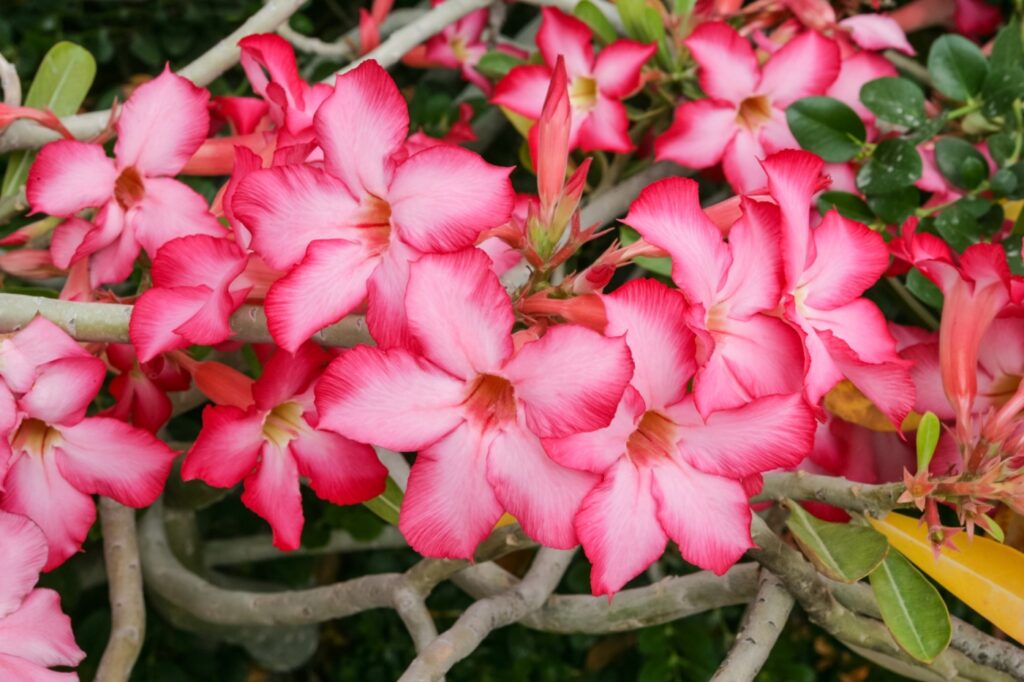
Q. The upper part of my Desert Rose got frosted and the stems were soft So I cut those all off. The top of the bulb is a tad soft, but the lower parts are green and firm. I’m wondering if I can save this plant?
Adenium obesum, or Desert Rose, is one of those plants that is supposed to be easy to grow. Naturally, I have killed several of them over the years. All those fatalities were due to cold exposure. Desert Rose will lose its leaves when the temperature goes below 60 degrees and will not tolerate temperatures below 50 degrees.
If the bottom of your plant is still green and firm, it may have a chance. You can keep it and see if it bounces back, but I would probably buy a new one just in case.
Q. My grapefruit tree was damaged by frost this last winter and lost all its leaves, but the branches are not dead. Does it have a chance?
Many citrus trees are somewhat cold tolerant (some more than others). Sometimes a tree will lose all or most of its leaves (defoliate), but the roots and trunk will survive. This is more likely to be the case with a mature tree. Newly planted trees (less than 6 feet tall) are less likely to survive a cold snap and should be protected in winter.
All citrus trees are grafted onto a hardy rootstock, either Flying Dragon or Sour Orange. The rootstock can be more cold-tolerant than the top (fruit-producing) part of the tree. If you see new growth and live branches only below the graft, the tree should be removed. If those rootstock branches are allowed to grow, they will produce dreadful tasting fruit!
Q. Now that the weather has warmed up, I’m seeing aphids all over some of my newly planted vegetables. What can I do to get them under control before they take over everything?
First, use a jet of water to blast most of the aphids off. They will not crawl back up onto the plant because this kills them by ripping their mouthparts off. This process will have to be repeated about every week, but it’s gratifying.
Ants can be a problem in the vegetable garden because they protect the aphids, and you don’t want to use anything toxic directly on the plants. Place secure ant bait stations around the garden to target ant colonies. I have found some success using food-grade diatomaceous earth on the ground where ant swarms appear. Once the ants have been knocked down, beneficial predator insects can do their thing to further keep the aphids under control. Look for lacewings, hover flies, and ladybugs and be happy that you didn’t inadvertently kill them with pesticide.
Have questions? Email [email protected].
Looking for more gardening tips? Here’s how to contact the Master Gardener program in your area.
Los Angeles County
[email protected]; 626-586-1988; http://celosangeles.ucanr.edu/UC_Master_Gardener_Program/
Orange County
[email protected]; 949-809-9760; http://mgorange.ucanr.edu/
Riverside County
[email protected]; 951-683-6491 ext. 231; https://ucanr.edu/sites/RiversideMG/
San Bernardino County
[email protected]; 909-387-2182; http://mgsb.ucanr.edu/
Related Articles
Sunflowers: What you need to know about the native pollinator-friendly flowers
Planting seeds in your garden: What you need to know so they’ll grow
America’s love affair with the lawn is getting messy
A guideline for watering and more tips for the garden this week
Why this avocado grower says you don’t need to fertilize your trees
